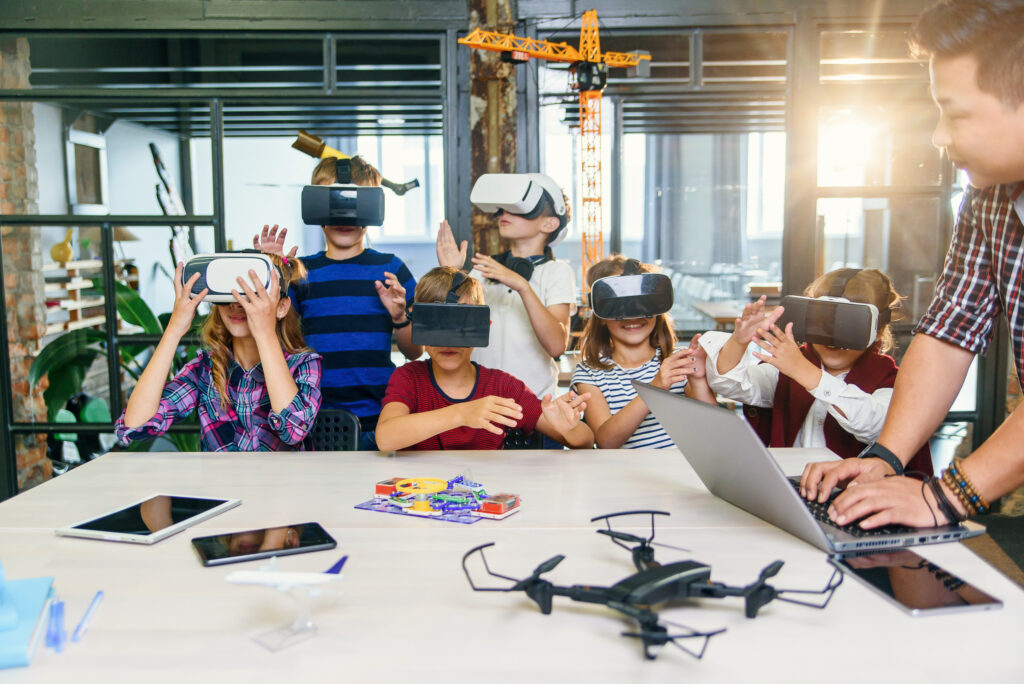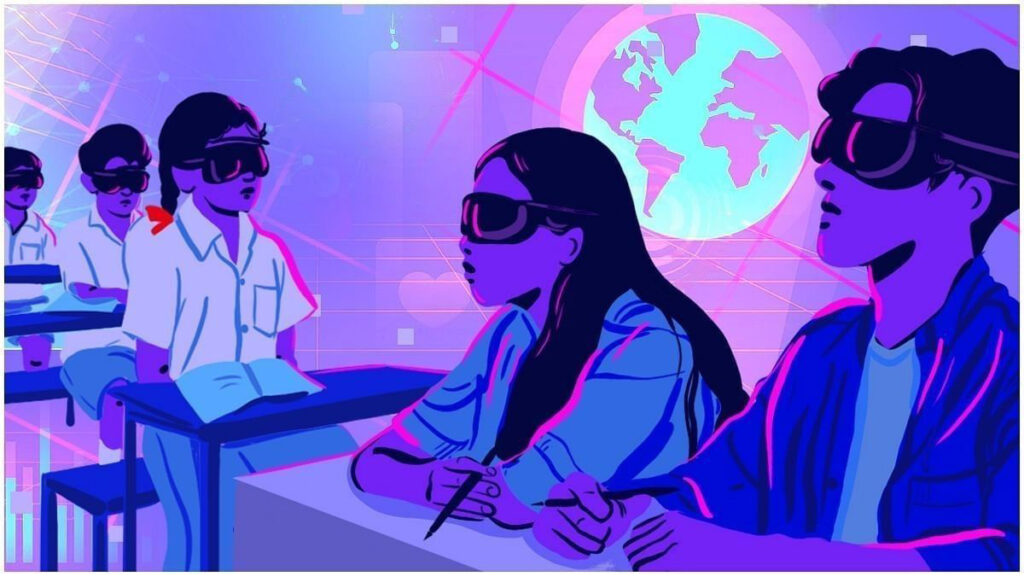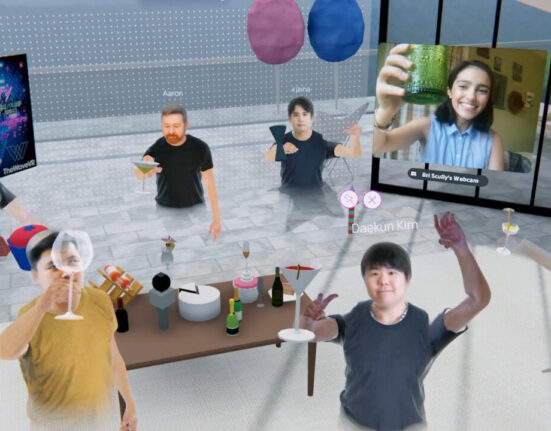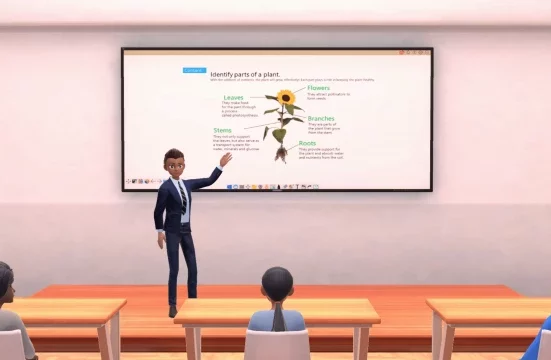Over the past few decades, the internet has exponentially raised knowledge transfer in education. The education sector has significantly advanced since then. Microlearning has been made mainstream by mobile computing and also social media increased situation awareness learning. Now, according to industry observers, the third paradigm has arrived, Which is none other than Metaverse!
Metaverse in Education is a digital 3D area where we interact as lifelike avatars, Metaverse will soon take the place of flat, static pages on PCs and mobile devices.
You’re never alone in the metaverse! The metaverse is “always on” and allows for social interactions with peers this will greatly influence education as knowledge transfer is the key to learning a subject.

A brilliant Way to Share and Learn
Virtual reality headsets are the gateway to Metaverse. With VR, students can immerse themselves in the senses and this in turn provides an unparalleled sense of live learning. Users can freely roam around a virtual classroom and interact with the campus with their hands, exactly like they would in real life. VR technology has developed to the point that it is no longer some pixelated 2D game and most seem to be aware of this.
VR activates the learning capabilities of the brain and induces muscle memory. VR can train anything, from farming skills to fire fighting in the same way that a flight simulator trains pilots for emergency landings. Live training, such as using the biological hands and body for tasks is too risky, expensive, inconvenient, or just impossible to practice in real life. This is an unmatched feature that is available as one of the key strengths of the metaverse.

The process of Learning is in every aspect of life
The Metaverse in Education offers an opportunity for immersive, embodied skill development using real-world events and high-stress situations, where mistakes can be made without repercussions. When done correctly, it blends spatial design, and data analytics to increase every learner’s confidence and also puts test their ability due to its realistic nature.
The following are some advantages of metaverse training:
Experience-based education is the best way to learn not only new skills but also in improving the currently known skills. The pharmaceutical industry uses a realistic, multi-person interacting simulation to teach life-saving lab techniques. Students enter a virtual lab where they can communicate with teachers while practicing.
Through self-practice In the metaverse, learners can practice concepts in a variety of ways to hone skills through intense activity and feedback loops. Every time the simulation is played something new happens. Learners can also ask for assistance when teachers are near.
Independent Decentralised education Responding to the workplace microaggressions cause psychological stress. For learning, in an unbiased manner or without the influence of a governing body Web 3 combined with Metaverse paves way for ethical learning.
Learning through Exploration
Visualization and storytelling are two hallmarks of a metaverse learning experience and are much needed today. Through VR technology, learners can step into an entirely different world or into another person’s shoes. Stepping into meta worlds facilitates visualization of scenarios, including complex development challenges. But Through bite-sized 360-degree stories, learners enter global development challenges.
Training employees in soft skills like leadership, listening, communication, and empathy is challenging to accomplish and assess but the metaverse makes this possible by immersing students in actual situations and allowing them to practice their soft skills in a secure setting. Eliminating awkward moments and addressing people who fear social interaction and have social anxiety.
Increase the attention of the learners
Organizations can gather previous data to obtain insights into student behavior to measure progress, and continuously improve the learning experience by using the metaverse to build immersive learning experiences. Performance, struggles, and engagements are all pertinent data on learner’s behavior. Additionally, teachers can take a more active part in data collection analysis of the efficiency of these environments. Every digital trace may be tracked and this data can offer useful insights for enhancing the learning experience.

Improve accessibility during unfavorable situations
A 3D digital environment with elements of both virtual and physical worlds, including avatars, and other simulated situations are already there with a number of modeling and simulation tools for building virtual objects. Building life-like models in the metaverse universe are now possible. In this way, modeling and rendering technologies are essential to creating a harsh and changeling environment harsher than the actual situation. This helps in making a learner stronger and ready to face tough situations. This is a high-fidelity teaching environment. Additionally, they offer excellent opportunities for some educational settings and objects that are difficult in the real world to be portrayed.
Conclusion
The technical leaps of high-speed communication, AI, and virtual technologies have offered great possibilities for developing the metaverse. The Metaverse in Education is a brand-new concept compared to existing educational technologies. As discussed above, the metaverse can bring about great opportunities and innovations for education. To some extent, a variety of obstacles and limitations in current education could be broken through in the metaverse world.







